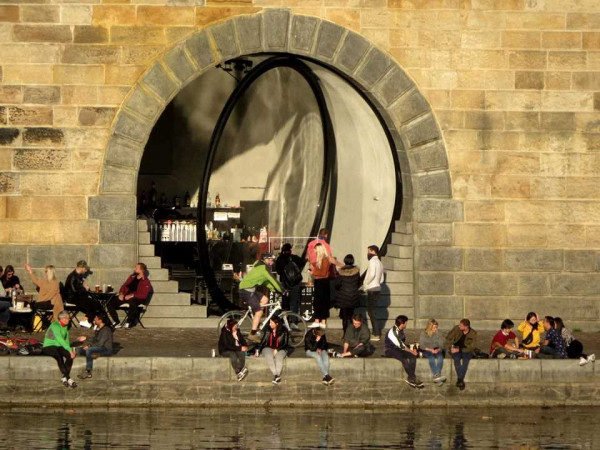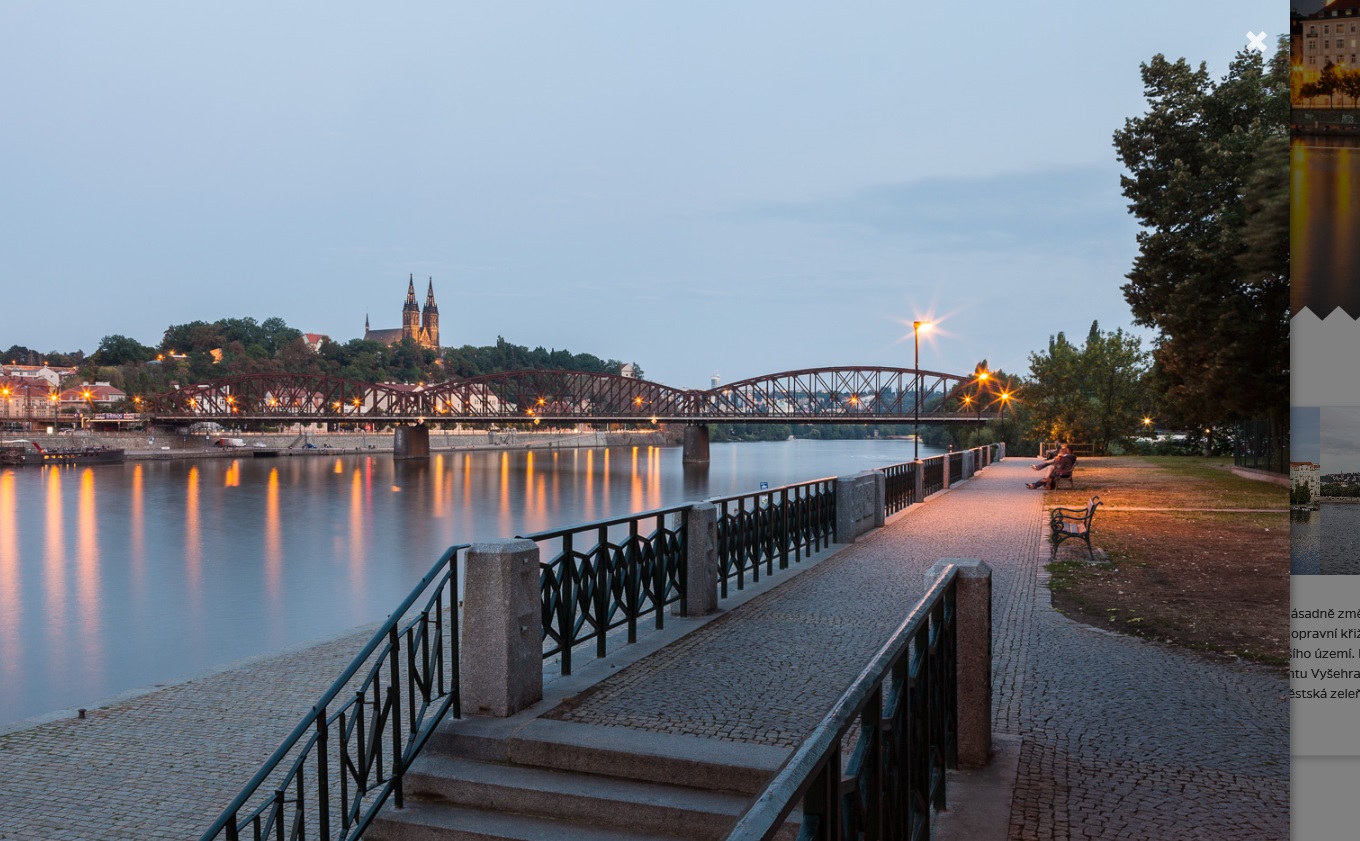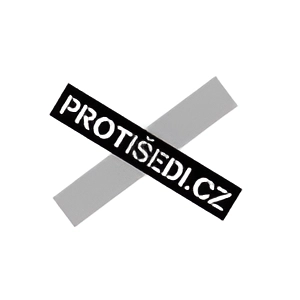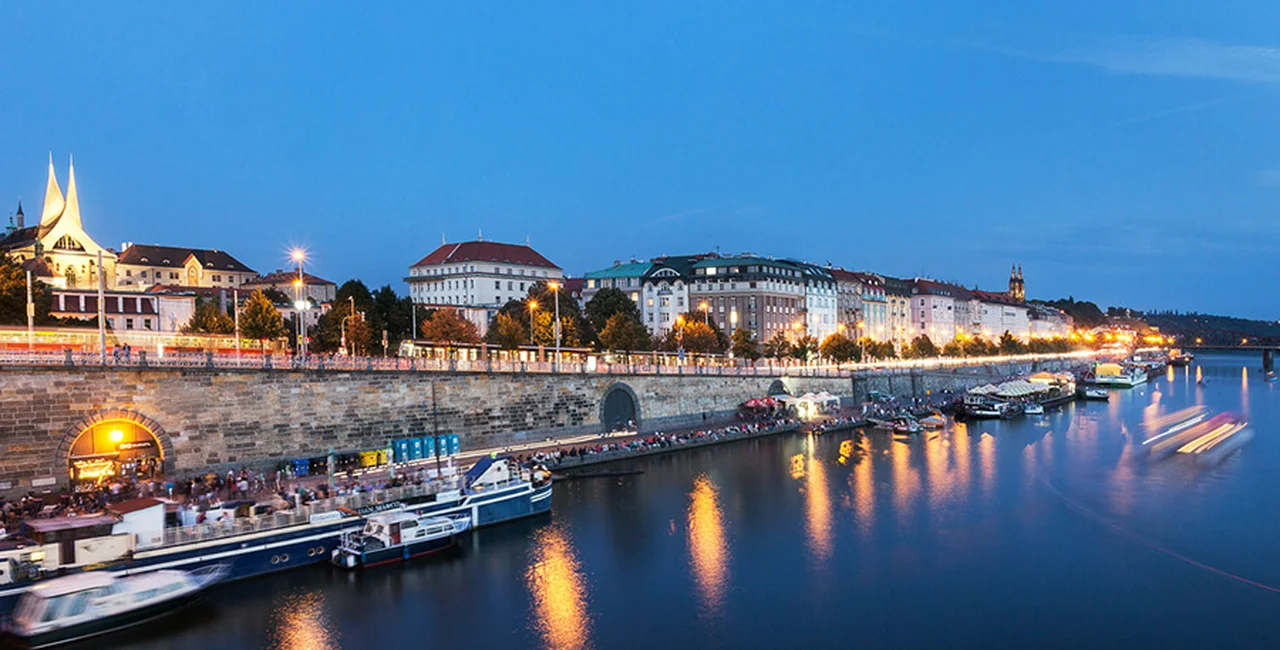Prague’s embankments have long been a symbol of the city’s urban revitalization. Particularly during summer months, when the banks of the Vltava in the city center enjoy a large influx of visitors.
Now, following a period of strict hygienic measures brought about by the coronavirus the embankments are coming to life once again. Operators of businesses in the newly renovated vaults are attracting visitors with new food made from local ingredients, quality fair trade coffee, and microbrews.
Do-it-yourselfers can borrow tools from workshops and cultural enthusiasts can check out various exhibitions.
Since last autumn, a total of six cubicles on Rašínovo nábřeží have gradually opened on both embankments, featuring eateries, galleries, bars, and even a couple of public toilets.
On Hořejší nábřeží there are nine vaults, with dining options, galleries, workshops, bars, and community spaces as well as the ever-important public toilets. All of the vaults are air-conditioned, equipped with heating and flood protection.
Many of the original tenants returned to the cubicles along the embankments or the spaces were offered to private bidders in a tender last year. The Prague Steamship Company will continue its operation, and will also operate a gallery connected with the history of the Vltava, water, and steamships. Bajkazyl also intends to continue its activities.
What else can you do along Prague’s waterfront and what is in the works for summer?
Vaults offer entertainment, education, and food

Prior to their installation, a concept was drafted for each cell, which determined whether a café, bar, or gallery would take up residence. Contracts with tenants are concluded by Trade Center Praha (TCP) for an indefinite period. In the case of ships, such as the Cargo Gallery, currently parked on Hořejší nábřeží, the space is rented for thirty days. The position of Cargo Gallery will soon be moved behind the Admiral’s boat.
“I am glad that the river basins are so popular and that we managed to choose an interesting composition of operators. There is good food, interesting bars, and various educational and leisure activities. You can spend a pleasant day by the river, really everyone can do their thing,” says Jan Chabr, representative of the capital city of Prague and councilor for property management.
“By choosing tenants, we also tried to find a balance between visitors and neighbors and add more value to the existing entertainment element.”
For example, cubicle number six is run by Tiskárna na vzduchu, which named its space Lab and opened a zero-waste bistro here. The Lab cooperates with local suppliers of raw materials and their offer of refreshments emphasized on minimizing waste.
Vault number 16 is operated under the name DOK16 by the Municipal Library in Prague. It is not a standard branch of the library, but a neighboring workshop, which is open to all who want to experience the joy of working with their own hands, who lack their own tools at home or just want to share in the joy of creation.
Although books cannot be borrowed or returned here, they can be shared and swapped among readers.
A workshop will also open in vault number 10. The workshop-café concept offers draft beer from the Kamenice nad Lipou Brewery and Puro Fairtrade Coffee and welcomes anyone who wants to create or repair something.
In devítka kobce, visitors can enjoy excellent coffee, mixed drinks, or homemade lemonades. Sandwiches and desserts are also served here, and there is a barbecue every weekend. In addition, an exhibition of works by the young painter and sculptor Martin Prachar is currently taking place in vault number 9.
“We are glad that after strict quarantine measures, life is gradually returning. The individual operations open and visitors get acquainted with the new design of the architect Jan Janda,” says Petr Hozman, curator of TCP. As a curator, as part of my job responsibilities, I try to meet not only with individual tenants, who are also open to mutual cooperation and meaningful connection of their activities.”
Markets and interesting events are coming to

The spaces on the Smíchov side of the Vltava have come to life a little slower. Praguers are just getting used to the fact that the embankment is not only the more popular Rašín embankment but also the part below Hořejší.
The Smíchov side is an oasis of peace and offers a view of the historical landmark of Prague Vyšehrad and the unique Railway Bridge. The local promenade will also be dedicated to relaxation, walks, and possibly acoustic concerts.
In addition, a community center was built in cell number 17, which is operated by the City Hall of Prague 5. The space will be dedicated to public events, such as exhibitions, discussions, and author readings. From mid-July, for example, an exhibition curated by František Ortman and Petr Hozman with the participation of a number of well-known artists should take place here.
“The upper waterfront was previously neglected, which is due to poorer accessibility from the city center, but also the lower intensity of sunshine on this side of the river. However, with the opening of the reconstructed Railway Bridge, the situation could change,” says Hozman.
At the same time, he revealed that various social events and markets could revive the embankment in late July and early August.
“So far it is in the project phase, it should be a maximum of forty stands. We want to stick to a certain unification and work only with black, beige, and white. Great emphasis must be placed on security, and this is not the only reason why we work intensively with the Police of the Czech Republic and experts who specialize in so-called crowd safety management,” adds Hozman.
On Rašínovo nábřeží, Zyos and Avoid Gallery will also operate in the renovated premises, and Kavárna Cibulák on Hořejší nábřeží.
The overall concept of elevated embankments began to emerge in 1841 as protection against floods. The massive walls of the most popular part of the Rašín embankment were completed in 1910. In the past, however, the area around the river was not used for cultural activities of Praguers, but for people who subsisted on rafting.
Cars were parked on the banks of the Vltava around 2006. Náplavky, as we know them today, began to slowly come to life in 2009.
At that time, however, it was still a few unique events. Together with the new concept of Prague’s embankments, the position of the Municipal Embankment Administrator was created in 2014, which became the company Trade Center Praha and which brought order to life by the river.
What’s your favorite cubicle to visit this summer? Visit prazskenaplavky.cz for a full line-up of weekend events.
Want to practice your Czech? Read the original article on Proti Sedi.












 Reading time: 5 minutes
Reading time: 5 minutes 
























